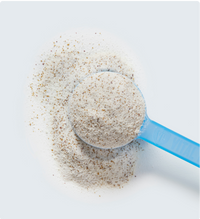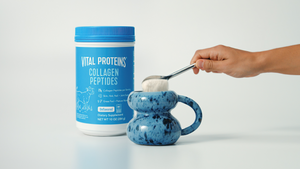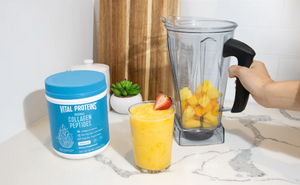Athletic shoes aim to improve your active lifestyle through structural foot support, shock absorption and motion control. But is it possible that training barefoot can do more for your body than with gym shoes alone?
These days, there’s an athletic shoe for practically every sport, workout and activity out there. And who can resist when they come in endless color combinations and designs? (Not us!) But beyond what athletic shoes offer is the theory that training barefoot can provide even more benefits. Below, we dig into this so you can settle once and for all whether you need to reach for your sneaks the next time you head out the door.

What exactly is barefoot training?
Barefoot training includes barefoot running, strength training, yoga, pilates or barre class. It can also be as simple as balancing barefoot on one foot, which engages the muscles in the calves, glutes, quads, hamstrings, core and above to stabilize the entire body. Other instances include scrunching up a towel on the floor with your toes and waving it right to left like a windshield wiper, or up and down like a paintbrush. The exercises that fit this description are endless!
So, why is barefoot training beneficial?
Our feet are home to over 7,000 nerve endings and receptors that activate our muscles, brain and the rest of the body to move. Building strength in your feet provides a strong foundation for the entire body. It supports smoother ankle-to-knee, knee-to-hip and hip-to-shoulder movements.
When you think of the opposite of this — wearing shoes — there are many detriments to consider. For example, when your feet are stuffed inside shoes all day, it can lead to atrophy, which can cause ankle instability, reduced reaction time, toes that stick together and other imbalances further up the kinetic chain of the body. All of these are things to avoid, which is why many consider barefoot training.
RELATED: How to Exercise Your Feet for More Powerful Workouts

Is barefoot training ever a bad idea?
Of course, there are always reasons one should not pursue a certain exercise like this one. For example, if you have existing health conditions or injuries, barefoot training or running may not be a good idea.
Ultimately, athletic shoes do provide protection and support to sustain healthy feet. However, if you’re not training barefoot to keep them strong, agile and flexible, those gym shoes may not do more for you than just look good on. As always, though, we recommend discussing your health goals with your licensed healthcare professional. They can best provide you with the diagnosis and treatment of any medical condition and assist you.
How can I stay safe while training?
Safety, first! Here are some things to consider before nixing your shoes:
- If you’re strength training without shoes, be mindful of other people’s actions as well as how you manage your own weights.
- If you’re running outside, run in an area that won’t cause blisters, cuts or falls.
- Start slow. You may have a more gradual adaption phase as you ease into barefoot running. And going too fast too soon could have consequences.














